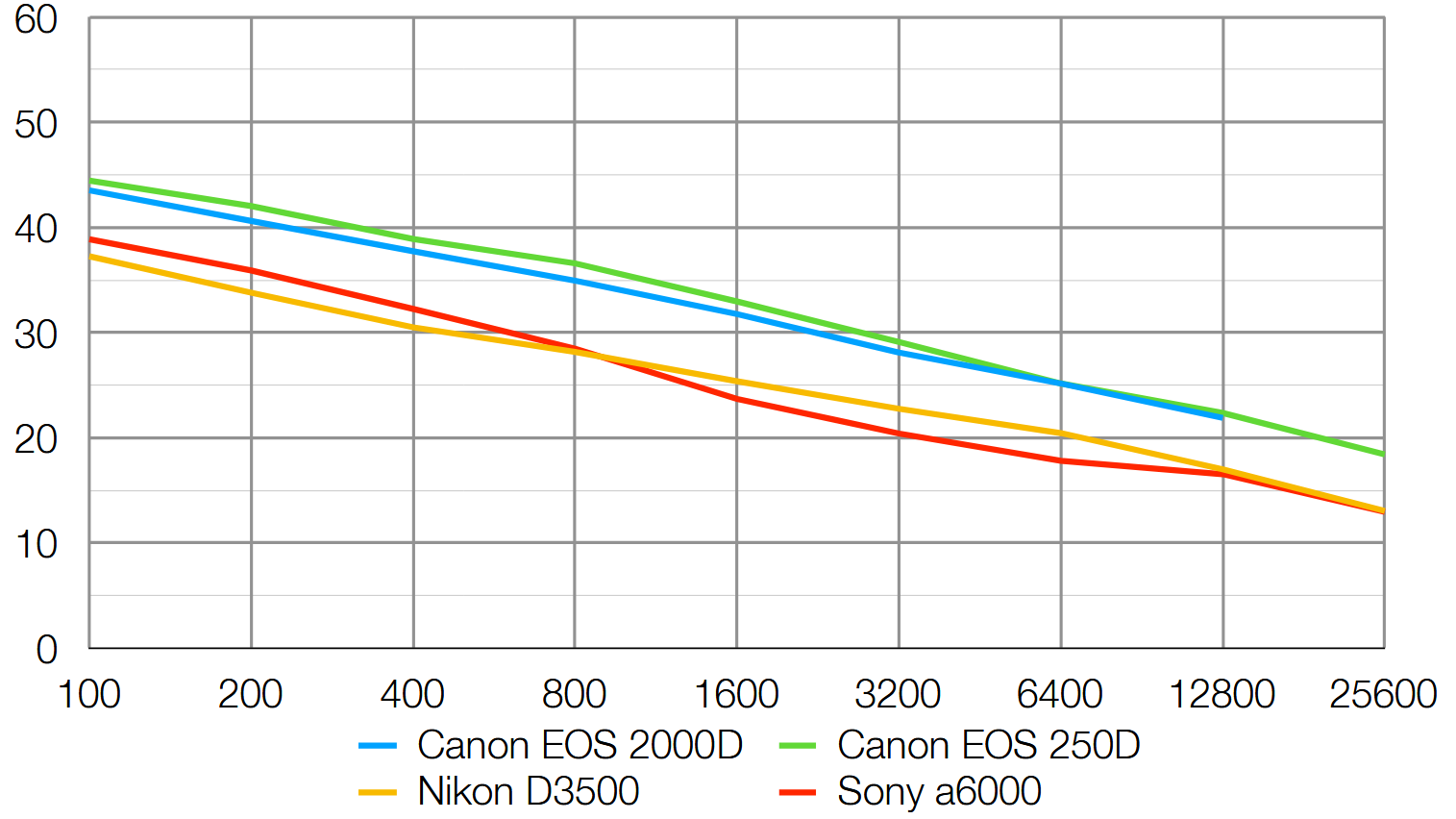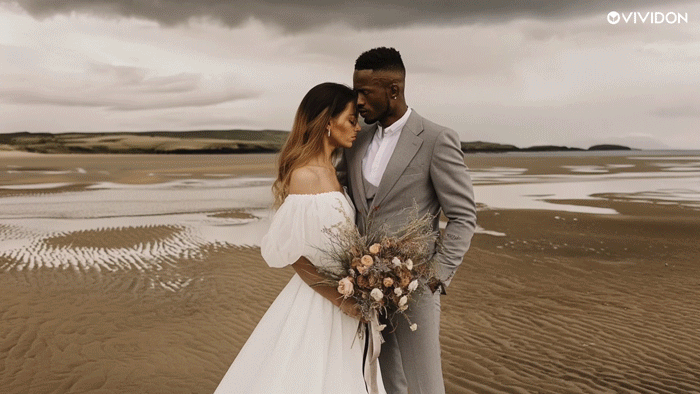Digital Camera World Verdict
The Canon Rebel T7/EOS 2000D is the cheapest DSLR you can still buy new today. Its 24MP sensor is on the same level as most modern rivals, though the basic autofocus and slow burst mode mean it's not great for action, and it only shoots 1080 video with slow contrast AF, so it's not idea for video either. But for new photographers who want to learn how to use a 'proper' camera, this is still a good buy.
Pros
- +
Cheap to buy
- +
Decent quality from 24MP sensor
- +
Huge choice of lenses
Cons
- -
Basic AF, especially in Live View
- -
Slow 3fps burst mode
- -
Only 1080 video not 4K
Why you can trust Digital Camera World
The Canon Rebel T7 (known as the EOS 2000D in Europe, and as the EOS 1500D in Australasia) is essentially a 24-megapixel replacement for Canon’s previous cheapest camera, the EOS 1300D (Rebel T6). It’s also one step up from Canon’s even cheaper Rebel T100 (EOS 4000D), though that model is no longer on general sale.
The Rebel T7/EOS 2000D specs are pretty basic, featuring Canon’s long-running entry-level nine-point autofocus system, an ISO range of 100-6,400 (expandable to ISO 12,800), continuous shooting at three frames per second and a non-articulating rear screen.
You do get Wi-Fi and NFC connectivity, though, for linking wirelessly with other devices. This is all very basic by today’s standards, although for beginners on a budget, the 2000D still offers a solid start in ‘serious’ photography.
Specifications
Sensor: 24.1MP APS-C CMOS, 22.3 x 14.9mm
Image processor: Digic 4+
AF points: 9-point AF (1 cross-type)
ISO range: 100 to 6,400 (exp 12,800)
Max image size: 6,000 x 4,000
Metering zones: 315 zones
Video: 1,920 x 1,080 at 30/25/24p
Viewfinder: Optical pentamirror, 95% coverage
Memory card: 1 x SD/SDHC/SDXC
LCD: 3-inch fi xed, 920k dots
Max burst: 3fps
Connectivity: Wi-Fi, NFC
Size: 129 x 101 x 78mm
Weight: 475g (with battery and memory card)
Build and handling
The external controls are basic but effective. The EOS 2000D looks simple enough not to intimidate novices, but has enough controls for more experienced users to start experimenting with settings, without having to go searching through menus, with buttons on the back for white balance, ISO, drive mode and autofocus settings.
The autofocus is a disappointment. It’s not the fact that you only get nine AF points for viewfinder photography – that’s probably fine for this camera’s intended audience – but that the sensor doesn’t use Canon’s Hybrid CMOS AF or Dual Pixel CMOS AF autofocus technology. This means that focusing in Live View is a slow and jerky business, especially since the 2000D’s kit lens does not use Canon’s quieter (and presumably more expensive) USM or STM autofocus actuators.
Performance
The EOS 2000D’s image quality is very good for a camera at this price, and a definite step up from the older 18MP sensor used until recently in Canon's budget DSLRs. Canon has cut quite a few corners in the hardware to get the EOS 2000D to this price, but it doesn’t show in the images.
The best camera deals, reviews, product advice, and unmissable photography news, direct to your inbox!
However, the sluggish autofocus and the poor quality of the bundled kit lens do detract from a camera that’s otherwise quite nice to handle. To get something with a better lens and better specifications, though, means paying extra to move further up the Canon range, leaving buyers with a tricky question to answer: the Rebel T7/EOS 2000D is certainly cheap enough, but is it good enough?
Lab results
For our lab data comparison, we compared the Rebel T7 to its more modern Canon DSLR stablemate, the EOS 250D, as well as the T7's arch rival from Nikon, the D3500. We also included the evergreen Sony a6000 as an example of an entry-level mirrorless camera that's also likely to tempt photographers wanting to get a foothold in the system camera sector.
We test resolution using Imatest charts and software, and dynamic range and signal to noise ratio with DxO Analyzer.
Resolution (line widths/picture height):
With all four cameras packing sensors with around 24MP on tap, its no surprise that the Rebel T7 resolves very similiar amounts of fine detail to its competitors.
Dynamic range (EV):
It's a similar story when it comes to dynamic range. The Rebel T7's results closely match those from the EOS 250D and Sony a6000 right through the tested sensitivity range and leaves the Nikon D3500 trailing at higher ISOs.
Signal to noise ratio (decibels):
Our signal to noise test measures image clarity, specifically the ratio of the actual image 'data' you want to capture, versus the image noise that you don't want, but will inevitably be visible when shooting at higher ISO sensitivities. The higher the score at a given ISO sensitivity, the better.
It's very much a case of Canon leading the pack in this test, as the Rebel T7 and EOS 250D produce images with noticably less noise than those from the Sony a6000 and Nikon D3500, regardless of ISO sensitivity.
Verdict
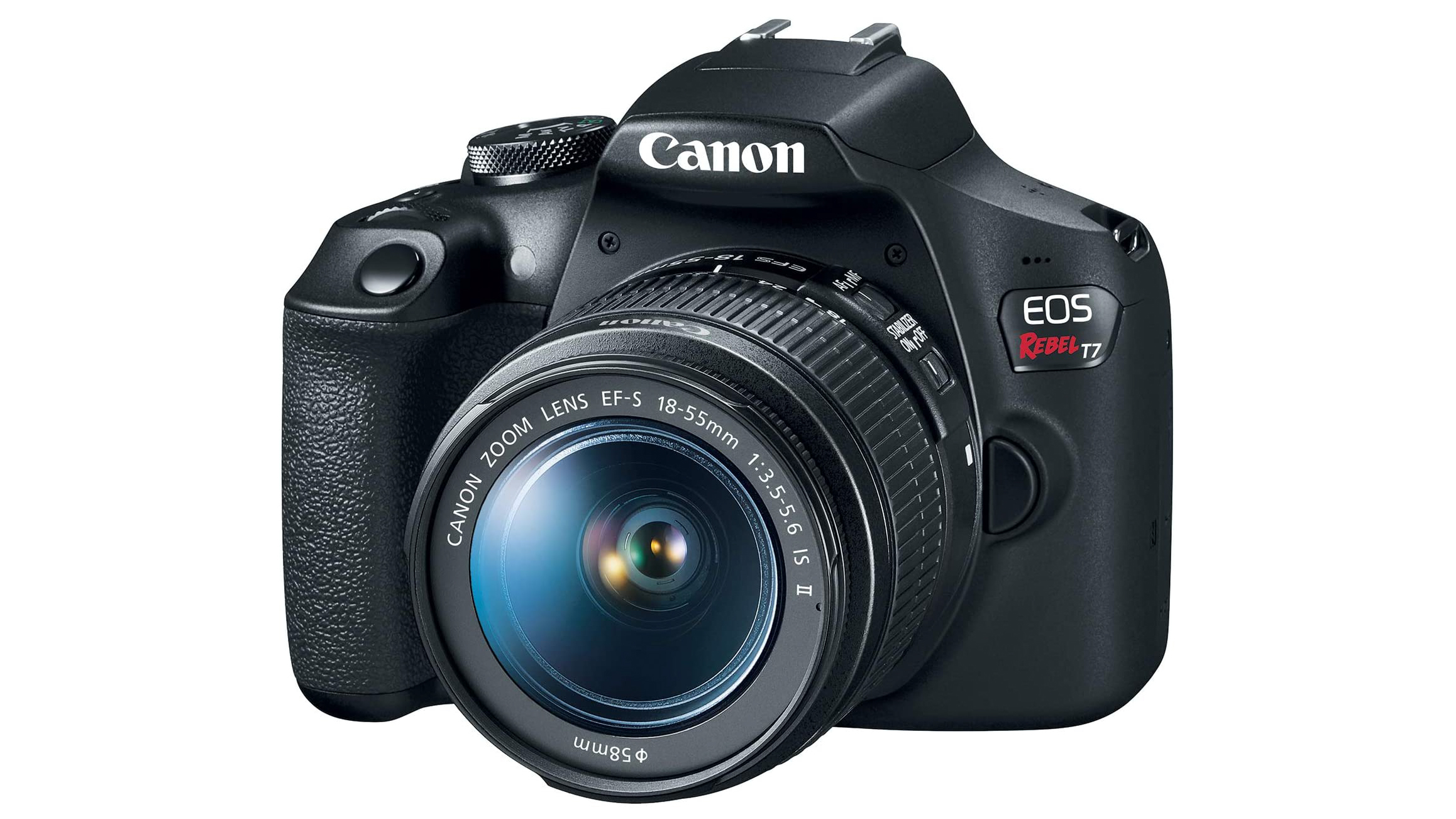
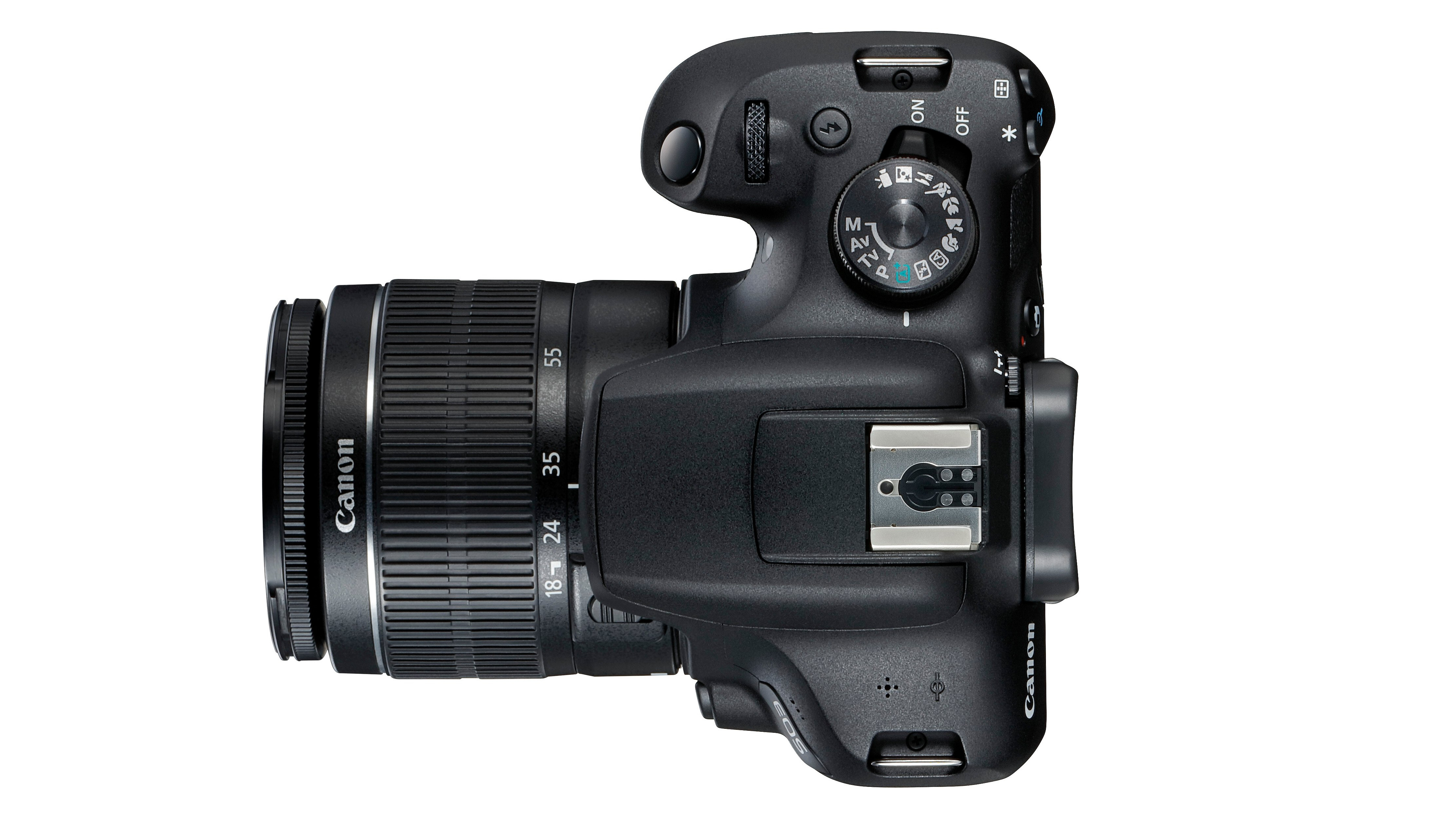
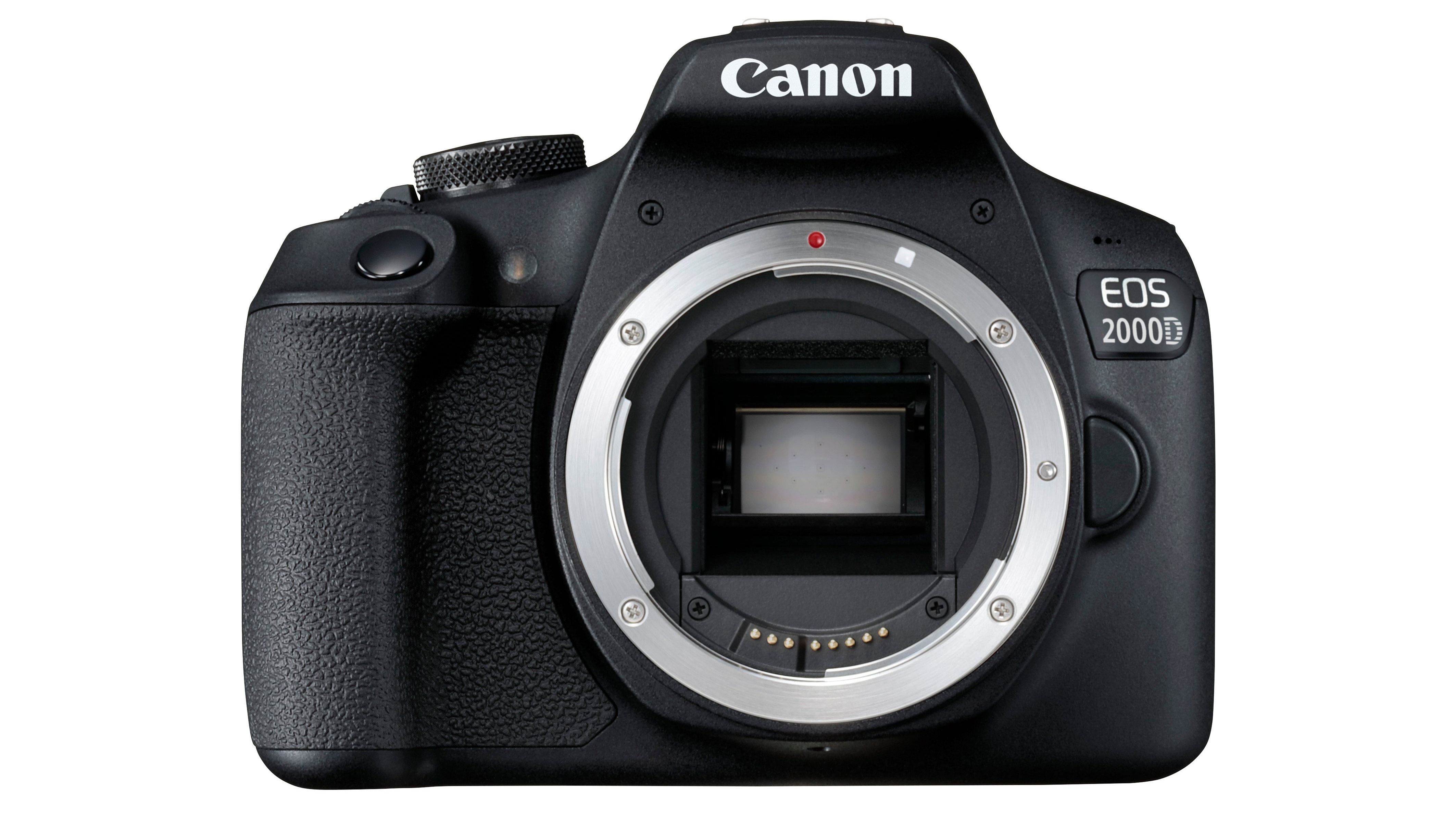
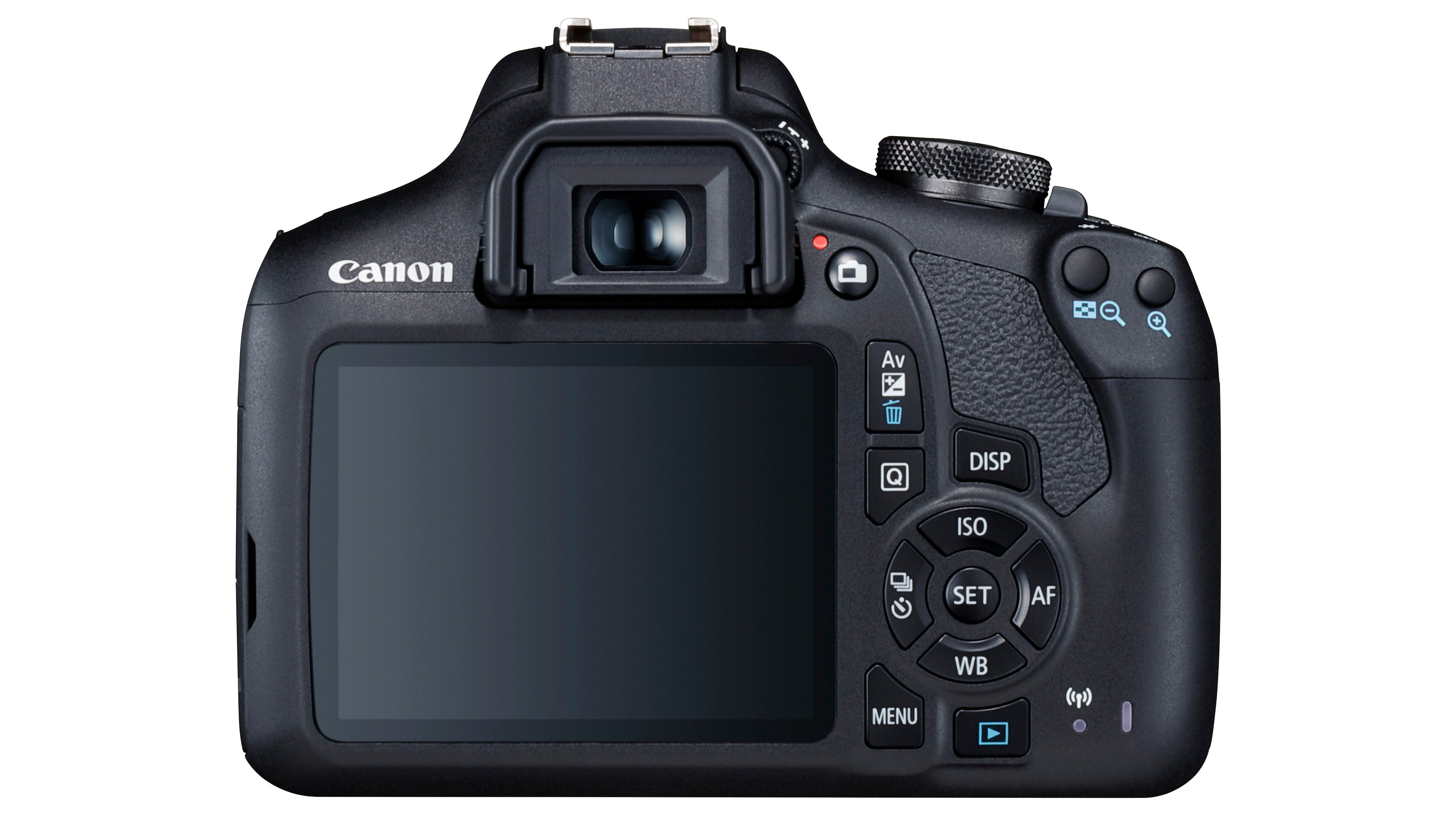
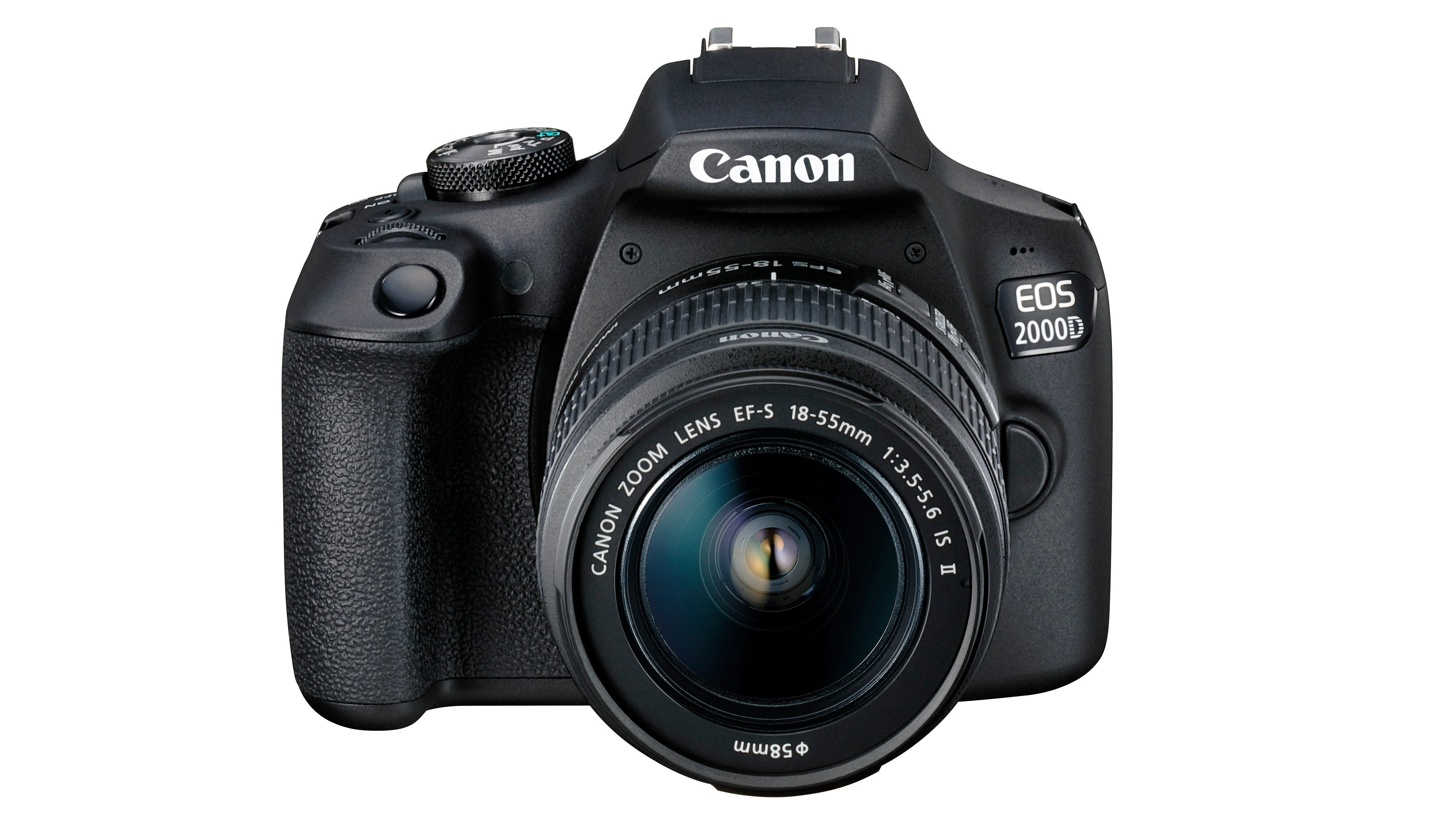
The Rebel T7/EOS 2000D was not especially cheap when it was launched, but prices have fallen considerably over time and the cheaper Rebel T100/EOS 4000D is gone. Now, this is not only the cheapest Canon DSLR you can buy, but the cheapest of any brand.
It's not a bad camera, even though it lags some way behind the latest DSLRs and mirrorless cameras for specifications. It would be a fine camera for a beginner interested mainly in stills and wanting to learn the basics of photography at a minimum outlay.
The autofocus performance isn't the fastest, the 3fps burst mode is slow by today's standards and the T7 only shoots 1080 video not 4K, but the 24MP sensor delivers good, clear results, and at current prices this camera is something of a bargain.
How we test cameras
We test cameras both in real-world shooting scenarios and in carefully controlled lab conditions. Our lab tests measure resolution, dynamic range and signal to noise ratio. Resolution is measured using ISO resolution charts, dynamic range is measured using DxO Analyzer test equipment and DxO Analyzer is also used for noise analysis across the camera's ISO range. We use both real-world testing and lab results to inform our comments in buying guides.
Read more:
• Best camera for beginners
• Best DSLR
• Best cheap cameras
• Best Canon cameras

Rod is an independent photography journalist and editor, and a long-standing Digital Camera World contributor, having previously worked as DCW's Group Reviews editor. Before that he has been technique editor on N-Photo, Head of Testing for the photography division and Camera Channel editor on TechRadar, as well as contributing to many other publications. He has been writing about photography technique, photo editing and digital cameras since they first appeared, and before that began his career writing about film photography. He has used and reviewed practically every interchangeable lens camera launched in the past 20 years, from entry-level DSLRs to medium format cameras, together with lenses, tripods, gimbals, light meters, camera bags and more. Rod has his own camera gear blog at fotovolo.com but also writes about photo-editing applications and techniques at lifeafterphotoshop.com







